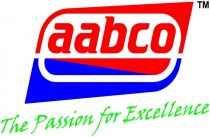Global Plasticizers Market Research Report - Industry Trends, Size, Share Analysis and Growth Forecast (2018 - 2024) - ResearchAndMarkets.com
The "Plasticizers Market Research Report: By Product, End Use, Geographical Outlook - Global Industry Trends, Size, Share Analysis and Growth Forecast to 2024" report has been added to ResearchAndMarkets.com's offering.
From $13,967.9 million in 2018, the plasticizers market is projected to grow to $16,700.6 million in 2024, witnessing a 3.5% CAGR during 2019-2024 (forecast period).
Market Insights
The phthalate category held the largest revenue share, of over 65.0%, in 2018, based on product, as end-use sectors, including home appliances, coatings, and flexible machine tools, witness high consumption of such products. They are used to manufacture coatings, healthcare plastics, emulsifying agents, and anti-viscosity agents. Non-phthalate variants would observe faster growth, during the forecast period, as the requirement for environment-friendly products is rising in Europe and North America.
The expanding construction sector is one of the most important drivers for the plasticizers market. With the growth in this sector, the demand for construction material, such as wall and roof insulation, tubes, pipes, and building interiors, is also increasing. In the last five years, the domain has witnessed stable growth, after recovering from the economic slowdown.
These factors, combined with the rapid urbanization and population boom, are leading to an increasing demand for plasticizers, which go into the production of construction material, such as roofing, cladding, and flooring.
The wires & cables category dominated the plasticizers market, in 2018, based on end use. During the forecast period, it is projected to witness considerable growth, due to the increasing usage of cables and wires, which have flexible polyvinylchloride (PVC) for insulation and protection, in end-use industries such as healthcare, construction, and packaging.
Across the world, the market was led by Asia-Pacific (APAC), which held a 60.0% share in 2018. This was a result of the high productivity of end-use domains including chemicals, automotive, construction, and electrical & electronics.
Key Topics Covered:
1. Research Background
1.1 Research Objectives
1.2 Market Definition
1.3 Research Scope
1.4 Key Stakeholders
2. Research Methodology
2.1 Secondary Research
2.2 Primary Research
2.3 Market Size Estimation
2.4 Data Triangulation
2.5 Assumptions for the Study
3. Executive Summary
4. Introduction
4.1 Definition of Market Segments
4.1.1 By Product
4.1.1.1 Phthalates
4.1.1.1.1 DOP
4.1.1.1.2 DINP
4.1.1.1.3 DIDP
4.1.1.1.4 DPHP
4.1.1.1.5 DBP
4.1.1.1.6 DIBP
4.1.1.1.7 Others
4.1.1.2 Non-phthalates
4.1.1.2.1 Terephthalates
4.1.1.2.1.1 DOTP
4.1.1.2.1.2 DBT
4.1.1.2.2 Adipates
4.1.1.2.2.1 DOA
4.1.1.2.2.2 DINA
4.1.1.2.2.3 Others
4.1.1.2.3 Maleates
4.1.1.2.3.1 TOTM
4.1.1.2.3.2 TINTM
4.1.1.2.3.3 DBM
4.1.1.2.3.4 DOM
4.1.1.2.3.5 Others
4.1.1.2.4 DINCH
4.1.1.2.5 Others
4.1.2 By End Use
4.1.2.1 Wires & cables
4.1.2.2 Flooring, roofing, & cladding
4.1.2.3 Films & sheets
4.1.2.4 Automotive parts
4.1.2.5 Medical equipment
4.1.2.6 Toys & child care products
4.1.2.7 Others
4.2 Value Chain Analysis
4.3 Production Process
4.4 Market Dynamics
4.4.1 Trends
4.4.1.1 Shift toward non-phthalate plasticizers
4.4.2 Drivers
4.4.2.1 Increasing construction activities and demand for related materials
4.4.2.2 Increasing demand for PVC in electronics and electrical industry
4.4.2.3 Impact analysis of drivers on market forecast
4.4.3 Restraints
4.4.3.1 Increasing regulatory pressure on PVC due to its low recycling rate
4.4.3.2 Impact analysis of restraints on market forecast
4.4.4 Opportunities
4.4.4.1 Adoption of flexible PVC bollards in commercial applications
4.5 Pricing Analysis, By Region
4.5.1 North America
4.5.2 Europe
4.5.3 APAC
4.6 Gross Margin Analysis of Major Plasticizers, By Region
4.6.1 North America
4.6.2 Europe
4.6.3 APAC
4.7 Regulatory Framework
5. Global Market Size and Forecast
5.1 By Product
5.2 By End Use
5.3 By Region
6. North America Market Size and Forecast
7. Europe Market Size and Forecast
8. APAC Market Size and Forecast
9. LATAM Market Size and Forecast
10. MEA Market Size and Forecast
11. Competitive Landscape
11.1 Market Share Analysis of Key Players
11.2 Strategic Developments of Key Players
11.3 Competitive Benchmarking of Key Players
12. Company Profiles
12.1 Eastman Chemical Company
12.1.1 Business Overview
12.1.2 Product and Service Offerings
12.1.3 Key Financial Summary
12.2 Evonik Industries AG
12.3 Exxon Mobil Corporation
12.4 UPC Technology Corp.
12.5 Perstorp Holding AB
12.6 KLJ Group
12.7 BASF SE
12.8 Lanxess AG
12.9 LG Chem Ltd.
12.10 Arkema Group
12.11 Mitsubishi Chemical Corporation
12.12 Nan Ya Plastics Corporation
For more information about this report visit https://www.researchandmarkets.com/r/i0ghps
View source version on businesswire.com: https://www.businesswire.com/news/home/20200205005434/en/



